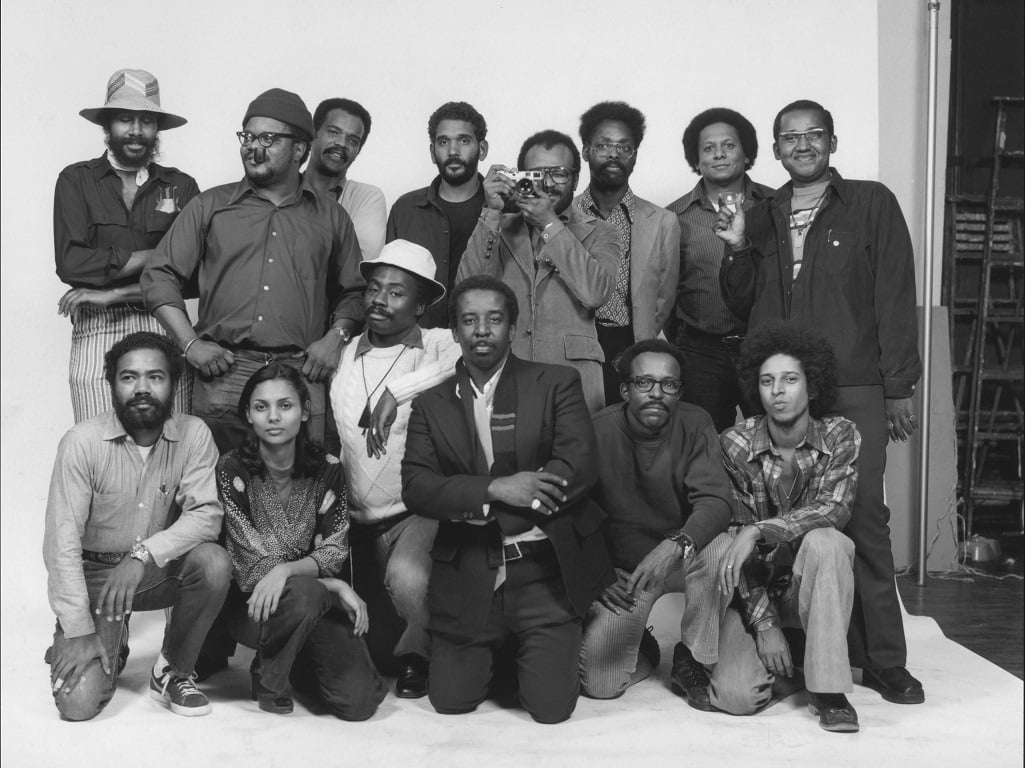VMFA’s Working Together: Louis Draper and the Kamoinge Workshop highlights the work of Richmond-born photographer Louis Draper and the group of African-American photographers he brought together in 1960s New York.
In Gikuyu, the language of the Kikuyu people of Kenya, “Kamoinge” means “a group of people acting and working together.” The Kamoinge Workshop — a collective of Black photographers in New York City founded in 1963 — and its considerable archive of work are the subject of the VMFA exhibit Working Together: Louis Draper and the Kamoinge Workshop, on display until October 18. But the exhibit isn’t about telling the story of the group — it’s about letting the group tell the story themselves.
“I wanted to do everything I could get out of the way of their narrative,” said Dr. Sarah Eckhardt, curator of Working Together. “What drew me to this project was the fact that Lou had written so beautifully about Kamoinge, and that he had already told this story.”
While the Kamoinge Workshop was made up of a diverse array of skilled and inventive photographers, it did not receive much recognition from outside the African-American photography community. For Eckhardt, the exhibition would allow the group members — several of whom are still living, and contributed to the oral histories Eckhardt completed — to tell their own story.
“That was something I really wanted to be very careful about,” Eckhardt said. “I didn’t want this to be my story about Kamoinge; this is their story. But as a museum, we’re able to give that story a platform.”

Born just outside Richmond in Henrico County in 1935, Louis Draper would go to Virginia State College before leaving to move to New York and pursue photography. While there, he met and studied with working photographers, writers, and artists who would become his mentors and colleagues, including the early members of the Kamoinge Workshop included in Working Together. These include Anthony Barboza, Adger Cowans, Danny Dawson, Roy DeCarava, Al Fennar, Ray Francis, Herman Howard, Jimmie Mannas Jr., Herb Randall, Herb Robinson, Beuford Smith, Ming Smith, Shawn Walker, and Calvin Wilson.
Although the Kamoinge Workshop focused on African-American communities in New York, bringing Draper’s work back to Richmond was significant for his sister, Nell Draper-Winston, from whom the VMFA acquired his entire archive in 2015. In a video for the VMFA, Draper-Winston relayed not only her brother’s studies under much-lauded photographers like Harold Feinstein and W. Eugene Smith — as well as his mentorship by Langston Hughes — but shared that their father was also a photographer. He bought a reluctant Draper a camera when Louis went to Virginia State.
Draper himself did not take up photography seriously until he saw the exhibition log for The Family of Man, a photographic exhibition curated by Edward Steichen and first presented at New York’s Museum of Modern Art (MoMA) in 1955, after which it toured for eight years. This inspired him to move to New York.
For Eckhardt, bringing the Kamoinge Workshop’s art to Richmond gives Richmonders, and specifically young people, the opportunity to see the remarkable, community-driven work.
“The specificity of history matters … to be able to not just tell a story, but to be able to relate it to visual images that an artist made who grew up in Richmond,” Eckhardt said. “[It] seems significant to me to then have Richmonders see that work — see what the person who was shaped by Richmond and by the community in Richmond in the 1930s and 40s and 50s — what he made.”
Community seems to be a central theme of the Kamoinge Workshop’s art, inspiration, and goals. While Draper and other photographers in the group photographed many well-known Black intellectuals, activists, and artists, much of their work was concerned with African-American communities in New York City, which were often overlooked or captured negatively by more mainstream photographers.
“He loved photographing notable people, but his main joy came from capturing the character of everyday people through his photography,” Draper-Winston said of her brother.

The group did not have a unified perception of all political matters. Some members were more radical, while others wanted to let the photographs serve as their form of protest. However, many of the Kamoinge Workshop members spoke in oral history interviews about the desire to see their communities portrayed differently from the way they saw them in the larger newspapers, and to harness the visual power of representation.
“The images that they’re doing of us in the newspapers are terrible,” Adger Cowans, a member of the workshop, recalled in a video for the VMFA. “So we decided that we would take that over and photograph our people in a positive way, a positive light.”
Community had several meanings for the members of the workshop and Draper himself. It included the community of photographers, the effort to represent communities of Black people in New York, and the community-driven aspect of having gallery space and hosting shows and critiques. For Draper, who appears in archival footage in the VMFA’s video, the energy of the group persists through these meanings.
“You have to talk about the actual workshop, the functioning, the day-to-day operation, and then you have to talk about the spirit that was generated by that formative period,” Draper said. “And that, I think, will continue with us. I mean, that was such an important part of our lives that there’s no way of erasing that.”
Though the exhibition opened in February, the VMFA closed its doors for several months because of the pandemic. The museum has now reopened with various precautions in place for safety, including requiring face masks for all employees and visitors and implementing social distancing guidelines. In the case of Working Together, the museum’s closing made exhibit organizers think about how to translate the exhibit into a virtual format. Digitizing the entire archive and posting oral history videos online gave a much broader audience access to the work of the Kamoinge, even though in-person viewings were impossible. The planned two-day symposium was also switched to an online, seven-week series.
“It made me far more committed to hoping in the future that we will increase accessibility … by also doing more online at the same time as we continue to have the work in the space,” Eckhardt said.

The striking work on display in Working Together: Louis Draper and the Kamoinge Workshop has historic weight and contemporary inspiration — the spirit of the group Draper described is still alive in the photographs, decades on. From the Civil Rights movement to now, in the midst of social movements demanding justice long overdue, the photographs feel as relevant as ever.
“One of the larger points of the exhibition is that they’ve always been relevant,” Eckhardt said. “This idea of something being more relevant now, like it was relevant in the late 60s, and now it’s relevant again — I think it’s more about who’s paying attention than it is about their work being more relevant at some point and less relevant at others.”
The Kamoinge Workshop can tell their own stories, past and present. It can encourage young people to speak, create, and protest for themselves. And it invites all people to listen.
Top Photo: Anthony Barboza (American, born 1944), Kamoinge Group Portrait, 1973, Virginia Museum of Fine Arts, Courtesy Eric and Jeanette Lipman Fund, 2019.249 © Anthony Barboza photog



